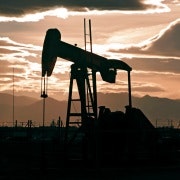Series: The politics behind a CSG boom
This is part two of a series. Part one can be found here.
Australian coal seam gas is booming, but is almost entirely dependent on Asian export markets for surging demand. As was shown in the last article, Chinese domestic politics is a major driver behind this growth.
Whether such momentum is maintained depends of course on a number of factors, but of great importance is the internal politics of another energy giant: the US. By understanding the effect of shale gas on the US economy we can explain why American politics could create challenges for our gas industry.
The unconventional gas industry began in the US, and spread quickly to Canada, then Australia. These are the only nations that have developed unconventional reserves to any great degree. Other regions are quickly jumping on the bandwagon, but for now, North America and Australia lead the world with this technology.
In the US, they are drilling for shale gas, whereas in Australia we are developing CSG fields. While the process for extracting both types is broadly similar, there can be important differences in the end product.
Producers in the US are exploiting ‘wet’ gas deposits, which means the wells produce natural gas liquids (NGLs) as well as methane. This technical difference has big political implications: The US manufacturing sector has made great use of NGLs to restore international competitiveness in the wake of the GFC. This means the issue has become highly politicised, as we will see below. But first, a quick explanation of the US shale industry is necessary.
Wet natural gas, like that produced in US shale drilling, has a higher energy content than dry gas, and is made up of other products including ethane, propane, butane, isobutane, and natural gasoline. NGLs are separated from methane at gas processing facilities and are very valuable because they are used extensively in manufacturing and as vehicle fuels. They help substantially to underwrite the cost of production in US wells.
Between 2005 and 2008, when US gas prices were historically high, between US$8-14/mbtu, dry gas wells were economic. Since 2008, expanding supply hasn’t been met by domestic demand, and prices have dropped considerably, hovering below $US4. As a result, producers have turned to wet gas deposits to make production viable. Producing more NGLs (in order to remain profitable) also means more gas is produced, since they come out of the same holes, which further depresses the price of gas. US gas is between a third and a quarter the price of Australian gas.
NGLs are heavily used in industry, particularly the petro-chemical sector, in the production of plastics, and as gasoline fuels. The abundance of NGLs in the US has given the manufacturing sector a huge boost, lowering their input costs and dramatically increasing international competitiveness. In addition, since an abundance of NGLs goes hand in hand with cheap gas, electricity prices for manufacturers are low at present. This is a situation that US manufacturers are very keen to maintain.
What do US manufacturers have to do with Australian gas? And why does it matter if their wells produce NGLs?
The answer relates to the long-term growth path of Australian unconventional gas industry. Current expansion of supply is locked in, however continued expansion like we’ve seen over the last five years or so depends on factors beyond our control. This is because Australian CSG wells are typically dry – they do not produce anything in large quantities other than pure methane. This means their viability depends more on the price of gas than US plays.
At present, this is not an issue, because US LNG exports have not been allowed for reasons of energy security. However, like Australian gas producers, US energy companies would love to sell their gas internationally. They would benefit from both larger sales volumes, and much higher prices: in mid-2012 the Henry Hub (US) spot price was $2.50/mbtu-in Europe it was $11.50/mbtu with Japan at $16/mbtu.
Liquification and transport would close this gap somewhat but there is still huge scope for profit by US gas producers if they could sell abroad. This would have massive implications for the international energy landscape, increasing competition and lowering gas prices.
At the moment, Australian unconventional gas producers are protected from US competition by US law. But the energy sector is doing its best to change these laws, to allow LNG export. Opposing them is the US manufacturing sector, which is enjoying cheap power and abundant inputs to production. It seems the oil and gas lobby is slowly winning: on May 17 the US approved the first export project-allowing a terminal to be constructed in Texas with the capacity to export about 2 per cent of US production.
There are still over 20 projects being reviewed, and the future of US energy exports hangs in the balance. If these projects are approved in large numbers, future Australian gas projects will need to be more competitive than they are now. In addition, since gas competes with coal in the energy sector, cheaper gas prices would have implications for our coal industry too.
What can be drawn from this is that US domestic politics will have a substantial impact on the sustained growth of the Australian unconventional gas sector. If Congress approves exports in a large way, the Australian industry will face stiff new competition and could well be priced out of certain markets.
To a large extent, the future of the Australian unconventional gas industry depends on the internal politics of the US and China. Industry leaders need to consider this carefully when planning the road ahead.
Tim Butler holds a masters in international relations and international law, specialising in energy markets. He is currently working for a drilling contractor in the Surat Basin, developing Queensland's CSG fields.
















